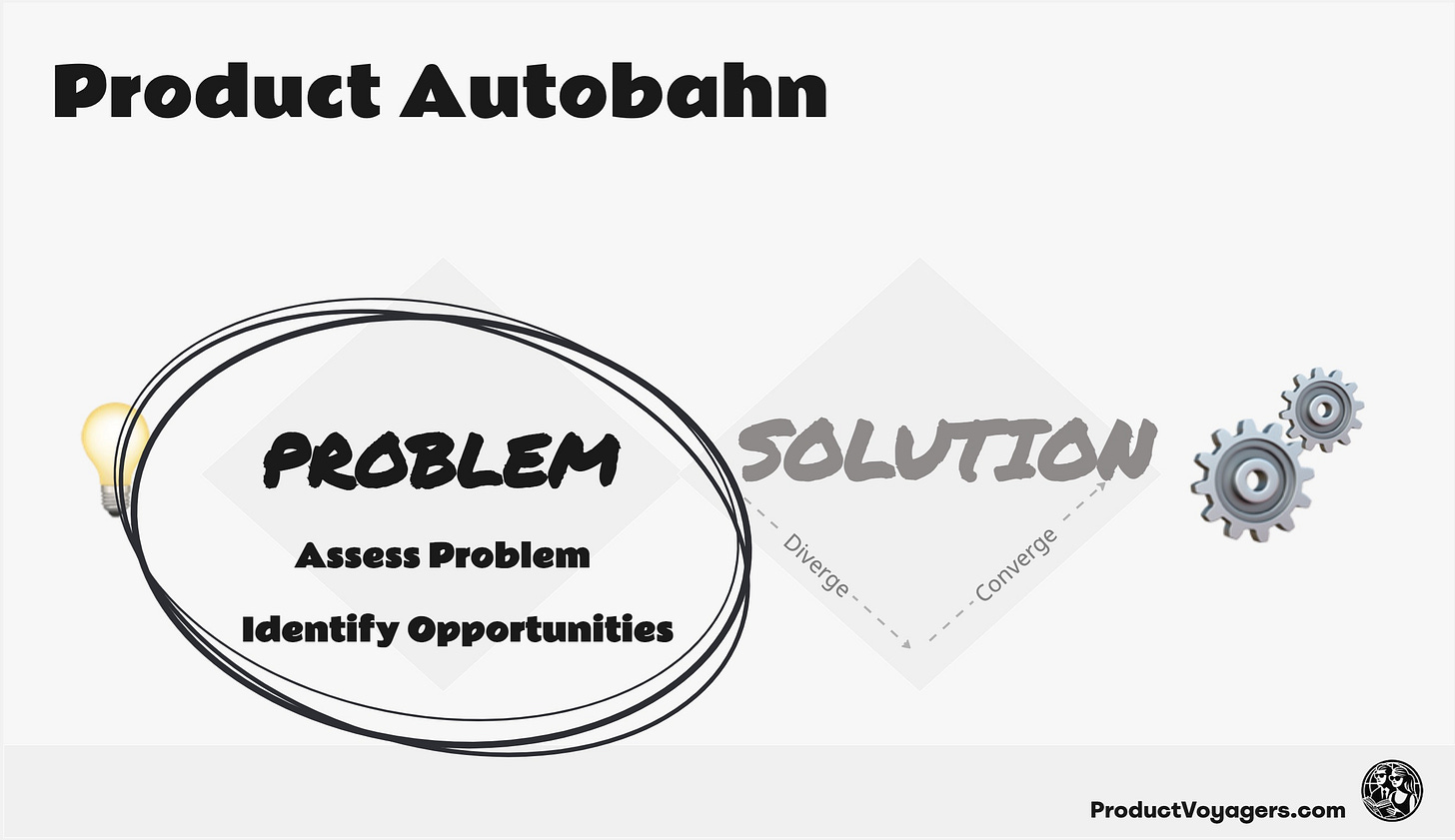Product Autobahn: Opportunity Prioritization Done Right
In the third article of Product Autobahn, we move from identifying problems to prioritizing them—this is where product judgment and leadership show up.
You’re reading the Prime edition of Product Voyagers — full access to playbooks, tools, and expert takes starts here.
This is my favorite phase of the Product Autobahn.
In Phase 1: Assess Problem, the Product Manager brings a problem forward and works with the team to clarify its impact. But it’s usually the Product Leader who decides whether to move forward or not. Most Product Managers we’ve worked with tend to stop short of making that call themselves. They form an opinion—but then pass the final decision up the chain.
But in Phase 2: Identify Opportunities, that changes.
Now, the ball is in the Product Manager’s court.
This is where the strong Product Managers distinguish themselves—not by how many tickets they close or how detailed their roadmap looks, but by their ability to:
Make decisions,
Explain the “why” behind them, and
Prioritize with confidence.
And if a PM hesitates here? That’s not a red flag—it’s a coaching moment. As leaders, it’s our job to help them build the confidence and structure to make these calls. Because this phase is all about making product judgment calls:
📌 Not which solution to build—but which problem to solve.
A Quick Recap: The 4 Phases of Product Autobahn
Problem Space
🔍 #1 Assess Problem – Understand the root cause and scope of the problem. [click to read more]
🎯 #2 Identify Opportunities – Define the right problem to solve.
Solution Space
💡 #3 Imagine Solution – Validate concepts and determine what to build.
🛠️ #4 Craft Solution – Finalize how the solution works.
Today’s Focus: The Opportunity Prioritization Phase of Problem Space
In this article, we’ll continue exploring the problem space and share:
🔍 A framework to help you prioritize challenges and turn them into clear opportunities.
📋 A real-world example—showing how an AI chatbot request became a focused, strategic product decision.
By the end, you’ll have practical tools to decide what problem is worth solving now—and how great Product Managers turn clarity into confidence. 🚀
Back to Our AI Chatbot Example
Remember our AI chatbot example from the previous article? It started with an enthusiastic stakeholder who came not only with an idea—but with a fully imagined solution.
Thanks to Product Autobahn, our teams were equipped to slow things down, guide the request through a structured problem assessment, and determine: yes, there’s real impact here—this is worth exploring further.
But we’re not jumping into solutioning just yet.
Before we can build the right thing, we have to choose the right problem.
Not every problem is created equal. After the initial assessment, it’s time to zoom out and look at the bigger picture:
What are the challenges behind the problem?
Which ones will create the biggest impact if solved?
Where should we focus first—and why?
This is the heart of Phase 2. In this phase, we:
✅ Break down observed problems into clear, structured challenges.
✅ Prioritize what to tackle first using impact and urgency frameworks.
✅ Align on the most valuable opportunities, balancing user needs, business value, and feasibility.
By the end of Phase 2, the Product Manager should have a clear, prioritized list of challenges—and the confidence to explain why the top one matters most.
Let’s walk through how this works in practice—returning to our AI chatbot example. 🚀👇
Keep reading with a 7-day free trial
Subscribe to Product Voyagers to keep reading this post and get 7 days of free access to the full post archives.







